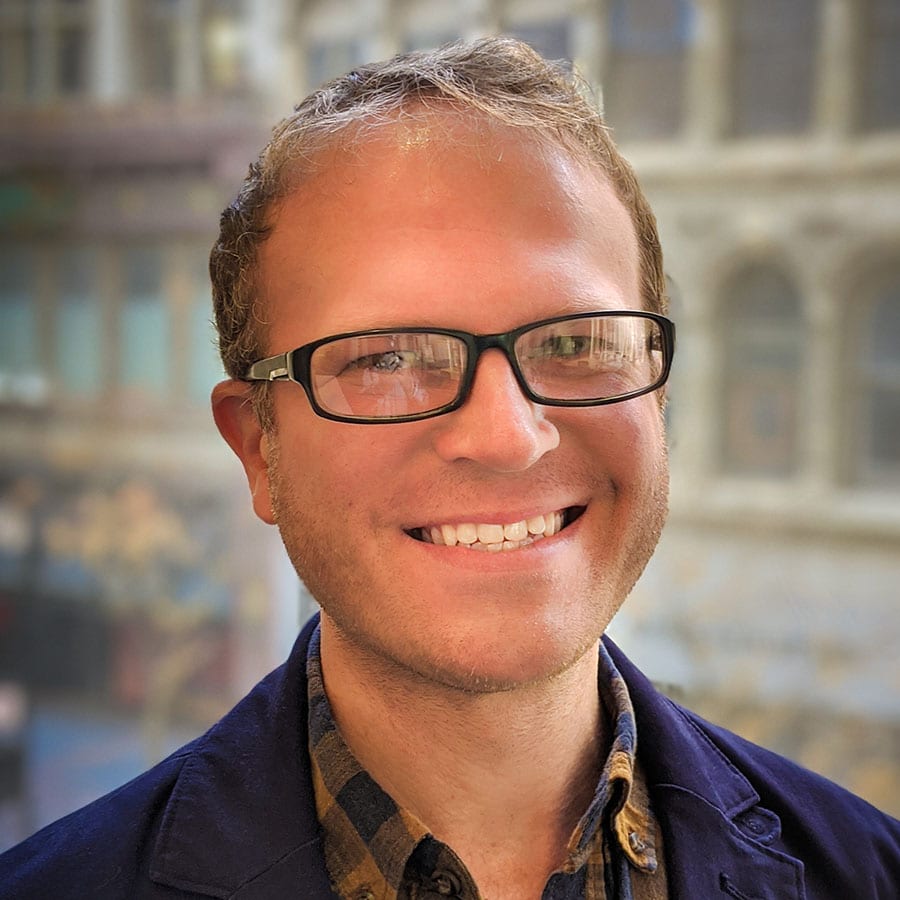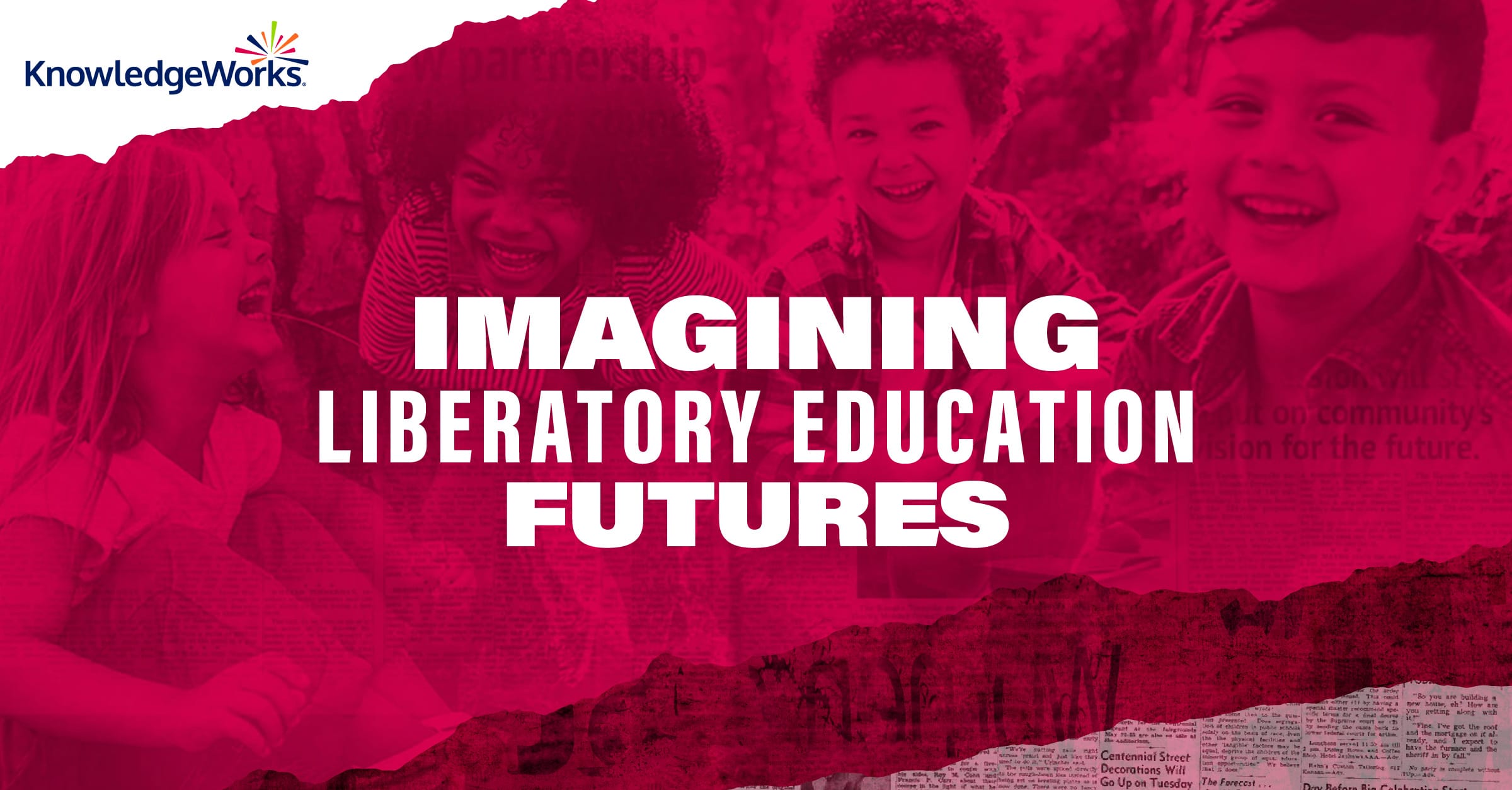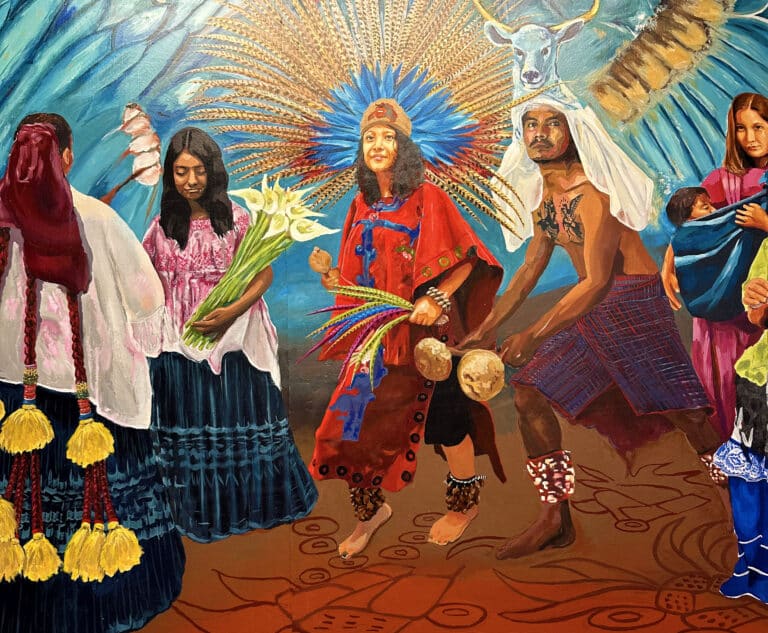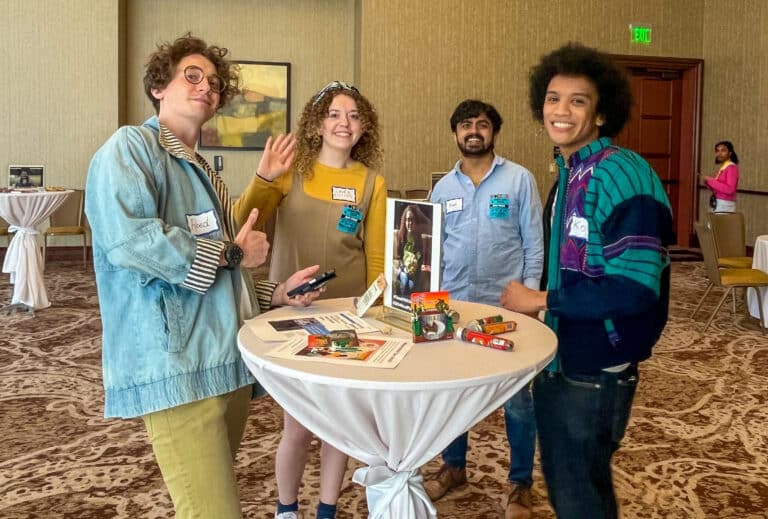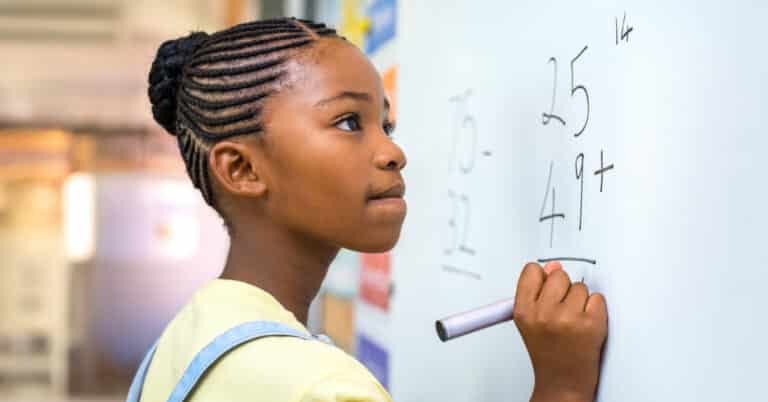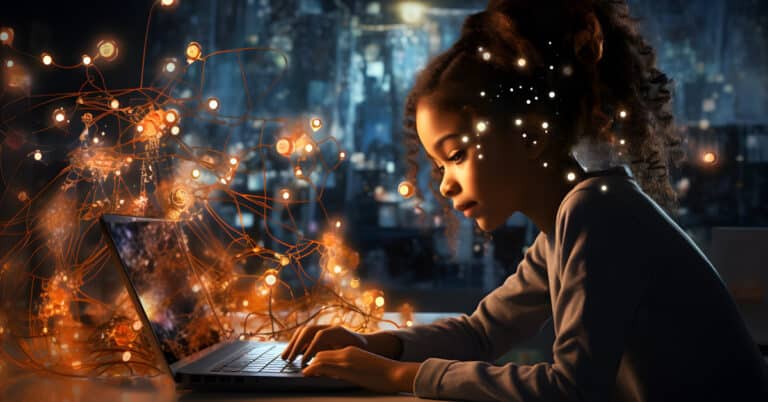Today’s young people are trying to get our attention about climate change. Are we listening?
KnowledgeWorks’ most recent forecast, Imagining Liberatory Education Futures, considers how the climate crisis, accelerating technologies and the fight for just societies, are leading us into a new era characterized by shared, existential challenges.
Anxious youth fight the climate crisis
The climate crisis strikingly affects the mental health of youth, with 84% moderately worried about it, 59% extremely worried and 45% saying it negatively impacts their everyday life and functioning. They are experiencing climate anxiety, also referred to as “eco-anxiety” and “solastalgia.”
“A lot of youth are experiencing a profound sense of loss due to climate change, and I think this will accelerate in the future,” explained David N. Bengston, an environmental futurist for the United States Forest Service’s strategic foresight group. “This could create challenges for education. Climate anxiety is part of what I call ‘future estrangement,’ which could be devastating for youth and challenging for educational systems if it continues to grow.”
Future estrangement, as Bengston defined it, is “a profound sense of alienation toward the future. It is the deep-seated feeling that the future is a hostile and bewildering world that we may not have a place in – or may not want to have a place in.” That’s not a healthy mental space for children to be in. But they are.
Young children’s connections to other people and to their hometowns, states and countries are in flux due to shifting family structures and climate change. Katie King has more, in partnership with Capita.
Read more >>
Leaders need to act and include youth voices in doing so. Of all age groups, youth (teens through twenties) are the most concerned about climate change because they are inheriting decades of environmental mismanagement by previous generations and will be left to deal with its dire consequences. Feeling betrayed by the government, young people, some not even in their teens, are taking action. There’s a lot to learn from their advocacy efforts. They’re forming coalitions, organizing, filing lawsuits, inventing and investing in green products and services and much more.
Many youth-led climate protests are collaborative and equitable, centering the voices of those most affected by climate change. For Indigenous communities, centering youth voices is common. Cheyenne River Sioux Tribe youth, having organized as One Mind Youth Movement, wanted to raise awareness of the Dakota Access pipeline. The group quickly took action to block the pipeline construction. Their efforts drew international attention, and within months, thousands, from conservative farmers to global Indigenous communities came to support the One Mind Youth Movement in standing up against the pipeline. Despite violence against them, the group remained steadfast in their efforts and eventually the pipeline was halted, leading to a 12% decrease in annual carbon emissions by the U.S. and Canada. Additionally, the movement sparked the formation of the International Indigenous Youth Council, a coalition of Indigenous youth across the globe focused on environmental efforts.
Still, young people have little to no political influence. At the 2021 United Nations Climate Summit, global youth gathered daily as an informal coalition to protest but held no official seat nor voice. Luckily, Panama’s lead negotiator, Juan Carlos Monterrey Gomez, agreed to use his country’s platform at the summit to elevate the global youth voice. Two hours prior to the final plenary session, Gomez and his colleagues, including Mari Helena Castillo Mariscal, wrote a speech in collaboration with the young activists. The speech was posted on TikTok by activist Alex Haraus asking for co-signatures. By the time Mariscal had finished reciting the speech, more than 11,500 signatures, representing 129 nations had been collected and the number was growing. As Panama was the last country to speak, the global youth had the final word.
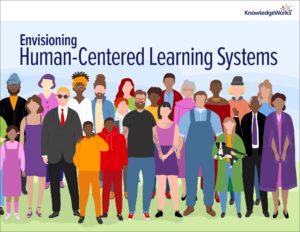
An important strategy for helping youth become advocates for change is to co-create with learners authentic, life-affirming learning experiences that build learners’ agency and impact and reflect learners’ spheres of concern — including family, school, community and planet. Find out more in Envisioning Human-Centered Learning Systems.
Read now >>
Training young people with tools for change
It isn’t all that surprising that Panama gave their time to amplify the voice of the global youth. Panama, the youngest delegation of any country at the 2021 summit and one of only three nations to claim to be carbon negative, systematically supports youth leading the fight against climate change. The country trains youth leaders in the science and politics of climate change and puts them in position to lead and enact policy.
A school in Nepal training youth for leadership positions also integrates climate education into its curriculum – not necessarily by choice but because it’s happening around them and directly impacting them. So the students are understanding it at a local – and global – level.
Young people, middle school through young adults, go through Aqqiumavvik Society‘s government-supported Ujjiqsuiniq Young Hunters program in Arviat, Canada, in which they learn traditional ways of knowing and use modern technology to understand the environment and how to live within it respectfully as it drastically changes around them. They’re mapping a changing coastline, an important resource for people who make their living on that coast. The program is a part of the Canadian government’s Indigenous Guardians Pilot Program, which supports Indigenous leadership in preserving their ancestral lands and resources.
There are a few examples of communities training youth in climate leadership in the U.S., too. The University of Nevada, Reno, engaged 15 high school students for a project in which students learned and practiced research and collection techniques. The students took photographs and gathered stories from community residents about their lived experiences with environmental hazards and natural disasters. They also learned key skills in civic engagement, legislative advocacy and public policy. The students used their research to form strategic plans for environmental changes in collaboration with the community, then worked to find legislative sponsorship for the bill.
Training in environmental stewardship also comes in the form of cultural traditions. The Chi-Nations Youth Council developed the First Nations Garden, which serves as an intergenerational learning center and gathering space for native youth in Chicago, to reconnect food pathways. Here, youth learn to grow their own food and medicine. The Center for Native American Youth launched the Brave Heart Fellowship, a program to empower Native youth to “advocate and mobilize across their communities to protect traditional lands, waterways, and sacred sites” through “intergenerational learning spaces.” The key in these learning programs are place-based, intergenerational systems.
The Center for Native American Youth’s State of Native Youth Report 2022 stresses the crucial role of place-based education for Native learners. Learn how place-based strategies lead to greater engagement of stakeholders and greater ownership of the work.
Read now >>
Scaffolded strategies for anytime, anywhere learning
It can be easy to feel overwhelmed with climate anxiety, but we should feel hopeful. “It’s vital to stave off future estrangement,” said Bengston, a climate optimist. “Pessimism is paralyzing and won’t help in the kinds of transformational change needed to address the climate crisis.” And there are things educators can do to promulgate a more positive climate outlook.
Providing emotional support for youth while equipping them with the tools and opportunities for leadership and decision-making is key. Educators can also support and incentivize students in experiential learning pursuits that align with their interests, working alongside seasoned experts to create change, as happened in Panama and Reno.
Let’s take a look at a few strategies – big and small – that educators may consider employing in an effort to both personalize the learning experience and help future leaders address the climate crisis.
- Rethink current learning spaces:
- Classroom educators: Educators need to rethink classroom layouts to offer flexible spaces for personalized, competency-based learning to thrive. This can include creating spaces for collaboration, small-group seating for coaching with peers or educators, or quiet nooks for reading and reflecting.
- School leaders and educators: Leaders need to reconfigure school communal spaces. How might the hallway, library or media center, cafeteria, or other spaces encourage learning and collaboration? This might be white board walls, technology stations or huddle rooms.
- District leaders: Districts can bring outdoor spaces to life throughout their campuses. Examples include wetland areas with pavilions, outdoor amphitheaters, classroom community gardens and courtyards with covered seating.
- Build community partnerships: Establish and build community partnerships where learners gain experience and learn alongside experts. Community partners might come to the school to offer a design challenge or provide guidance, support and feedback, or open their doors for shadowing, internships, field projects and more. Districts are beginning to offer flexible credits for such learning opportunities that count toward demonstrating competency.
- Take learning outside the school: Learning can happen anytime, anywhere. Educators should consider taking instruction outside the walls of a school building. Farms, community centers, urban gardens, parks, zoos, town halls and museums are just a few ideas educators may consider as we build toward more systemic change where the possibilities for learning locations are endless.
- Acknowledge and support cultural capital: Learners can bring their cultural knowledge and lived experiences to their learning journeys. Educators should support students that demonstrate mastery of competencies in ways that may not be available in the traditional classroom. For instance, organizing to support an interest, an idea, a cultural tradition or ancestral land often requires strategic planning, research, collaboration, communications and an understanding of rules, rights and policy regulations.
Youth are undeniably inheriting flawed systems and a climate crisis they didn’t initiate. As we work to establish more positive and sustainable futures, youth must be given a place alongside adults in creating that change. Let’s not just let them lead; let’s help them find their voice and lift them up.
Special thanks to Lori Phillips for contributing educator strategies for the article.
The climate crisis is one of the three major disruptions shaping our experiences today that will impact education systems over the next 20 years. Learn more about the impact of disruptions in our forecast Imagining Liberatory Education Futures.
